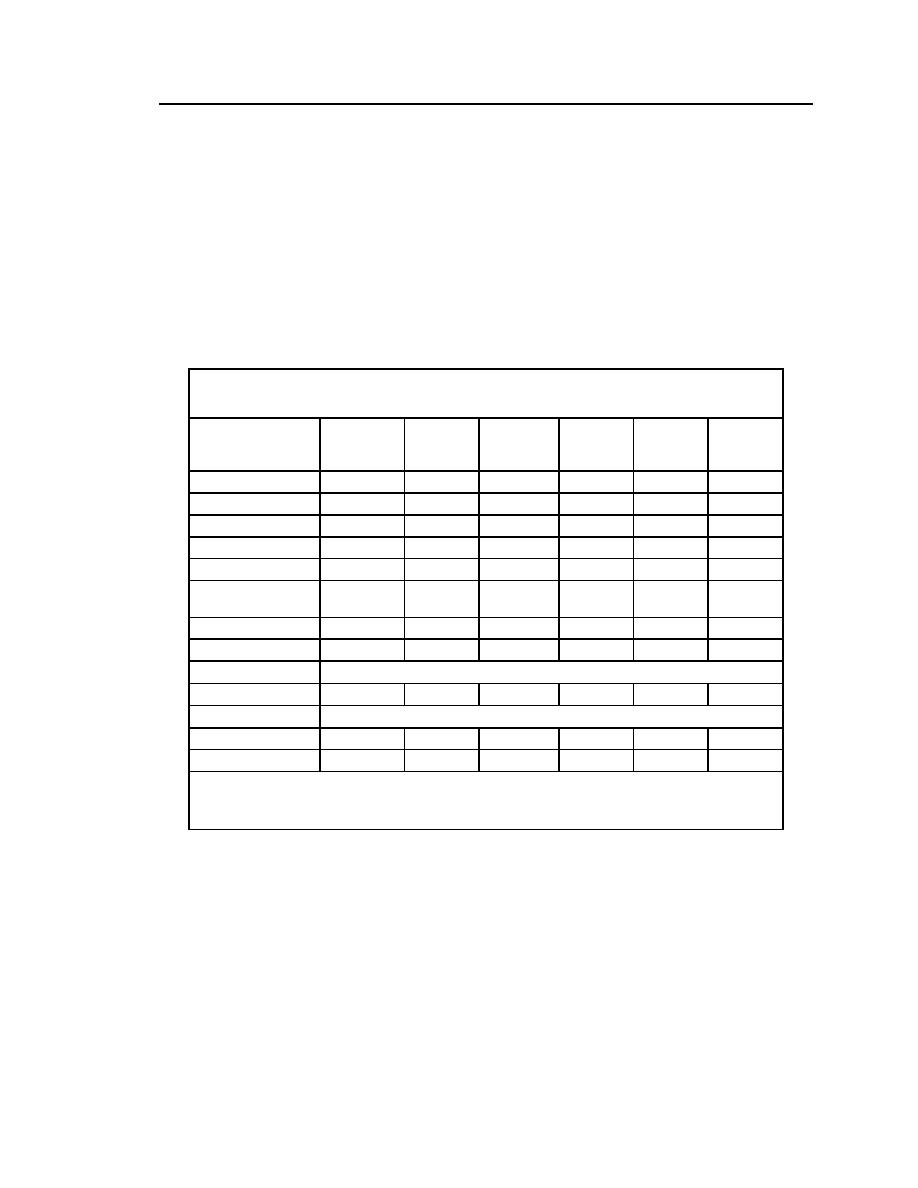
Army Aircraft Icing
37
rate how a 50% reduction in flight cancellations due to improved forecast icing
would affect their mission, 80% of the commanders indicated it would have
either a moderate or high impact on their mission. One commander with flight
experience in the United States, Germany, and Korea stated that the forecast level
of icing is rarely accurate for rotary wing aircraft. The support for an improved
icing forecast is strong (rated moderate or high impact) everywhere except with
the SHAPE flight detachment in Belgium and with a minority of commanders in
Germany and Korea (Table 14).
Table 14. Commanders' ratings (by location) of potential impact on mission of an
improved icing forecast resulting in a 50% reduction in flight cancellations.
% of
No. of
moderate
% of high
% of low
moderate No. of high
No. of low
ratings
ratings
ratings
ratings
Location
ratings
ratings
Belgium
1
0
100
0
0
0
Germany
4
2
29
14
57
8
Korea*
2
0
29
0
71
5
Fort Drum, NY
0
1
0
33
67
2
Fort Campbell, KY
0
2
0
50
50
2
Fort Wainwright,
AK
--
--
--
--
--
--
Fort Belvoir, VA
0
0
0
0
100
1
Fort Eustis, VA
0
1
0
100
0
0
USAR
Fort Sheridan, IL
0
2
0
100
0
0
National Guard
Indiana
0
0
0
0
100
1
Minnesota
0
0
0
0
100
1
* Two returned questionnaires from HQ, 17th Aviation Brigade, Seoul, Korea.
Note: The number of reports per month per location corresponds to the number of commanders'
questionnaires returned from each location.
4. Capability to provide advance (km or greater) icing hazard warning in-
flight on a cockpit display.
The support for an in-flight icing hazard warning system is strong (rated
moderate or high impact) everywhere except at the SHAPE flight detachment in
Belgium and with a minority of commanders in Germany and Korea (Table 15).
Lack of experience with flying in icing conditions intensifies any problems; one
commander refers to "apprehension of the unknown." As noted by one respon-



 Previous Page
Previous Page
